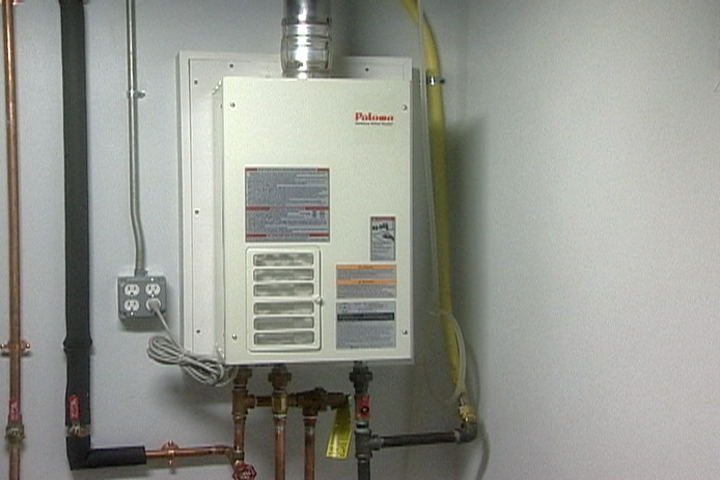How do you really feel on the subject of Tips on Maintaining a Water Heater?

Warm water is crucial for day-to-day comfort, whether it's for a refreshing shower or washing meals. To ensure your hot water system runs effectively and lasts much longer, normal upkeep is vital. This write-up provides practical suggestions and insights on exactly how to preserve your home's warm water system to avoid disruptions and costly repairs.
Introduction
Maintaining your home's warm water system may appear daunting, however with a few easy steps, you can ensure it operates smoothly for many years ahead. This overview covers whatever from comprehending your warm water system to DIY maintenance pointers and recognizing when to employ expert assistance.
Relevance of Maintaining Your Hot Water System
Regular maintenance not just expands the lifespan of your hot water system yet additionally guarantees it runs efficiently. Neglecting upkeep can bring about lowered effectiveness, higher energy expenses, and also premature failure of the system.
Signs Your Warm Water System Requirements Upkeep
Understanding when your warm water system requires interest can prevent significant concerns. Watch out for signs such as inconsistent water temperature level, odd sounds from the heating system, or rusty water.
Purging the Water Heater
Flushing your hot water heater eliminates sediment buildup, improving efficiency and prolonging its life.
Monitoring and Replacing Anode Rods
Anode rods protect against rust inside the storage tank. Checking and replacing them when worn is essential.
Facility Problems Requiring Specialist Assistance
Examples consist of major leakages, electrical issues, or if your hot water heater is constantly underperforming.
Routine Specialist Maintenance Perks
Professional upkeep can include detailed inspections, tune-ups, and making sure conformity with safety criteria.
Examining and Readjusting Temperature Setups
Changing the temperature level settings ensures ideal efficiency and security.
Do It Yourself Tips for Maintenance
You can execute a number of upkeep tasks yourself to keep your warm water system in top problem.
Checking for Leakages
Routinely evaluate pipes and links for leakages, as these can result in water damages and higher bills.
Comprehending Your Warm Water System
Before diving right into upkeep tasks, it's helpful to comprehend the standard components of your warm water system. Commonly, this includes the hot water heater itself, pipelines, anode rods, and temperature level controls.
Month-to-month Maintenance Tasks
Routine month-to-month checks can help catch minor concerns before they escalate.
Checking Stress Relief Valves
Checking the stress safety valve ensures it works appropriately and avoids too much pressure buildup.
Protecting Pipelines
Shielding hot water pipes minimizes warmth loss and can conserve energy.
When to Call a Professional
While DIY maintenance is useful, some problems need expert competence.
Final thought
Routine upkeep of your home's warm water system is vital for efficiency, long life, and price financial savings. By adhering to these pointers and recognizing when to seek professional help, you can ensure a dependable supply of warm water without unanticipated interruptions.
How to Maintain an Instant Hot Water Heater
Before tinkering with your hot water heater, make sure that it’s not powered on. You also have to turn off the main circuit breaker and shut off the main gas line to prevent accidents. Also turn off the water valves connected to your unit to prevent water from flowing into and out of the appliance. 2. When you’re done, you have to detach the purge valves’ caps. These look like the letter “T” and are situated on either side of the water valves. Doing so will release any pressure that has accumulated inside the valves while at the same time avoid hot water from shooting out and burning your skin. 3. When the purge valves’ caps are removed, you have to connect your hosing lines to the valves. Your unit should have come with three hoses but if it didn’t, you can purchase these things from any hardware or home repair shops. You can also get them from retail stores that sell water heating systems. Read the user’s manual and follow it to complete this task properly. When the hosing lines are connected, open the purge port’s valves. 4. You should never use harsh chemical cleaners or solutions when cleaning your unit. Make use of white vinegar instead. It should be undiluted and you’ll probably use about 2 gallons. 5. Now flush your water heater. This task should probably take about 40 minutes. We can’t give you specific directions for this because the procedure is carried out depending on the type, model and brand of your heater. With that being said, refer to the user’s manual. 6. When you’re done draining the unit, you have to turn off the purge port valves again. Remove the hosing lines that you earlier installed on each of the water valves. Put the valve caps (purge port) back in their respective places and be very careful so as not to damage the rubber discs that are found inside these caps. 7. Now that everything’s back in place, check your user’s manual again to find out how to reactivate your water heating system. 8. Once it is working, turn one of your hot water faucets on just to let air pass through the heater’s water supply pipes. Leave the tap on until water flows smoothly out of it. https://www.orrplumbing.com/blog/2014/september/how-to-maintain-an-instant-hot-water-heater/

As a passionate reader on How to Maintain Your Water Heater & Prolong its Life, I thought sharing that piece of content was important. So long as you enjoyed our article please be sure to pass it around. Thanks for taking the time to read it.
Book Inspection